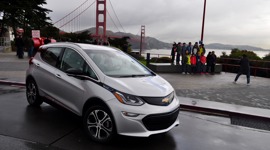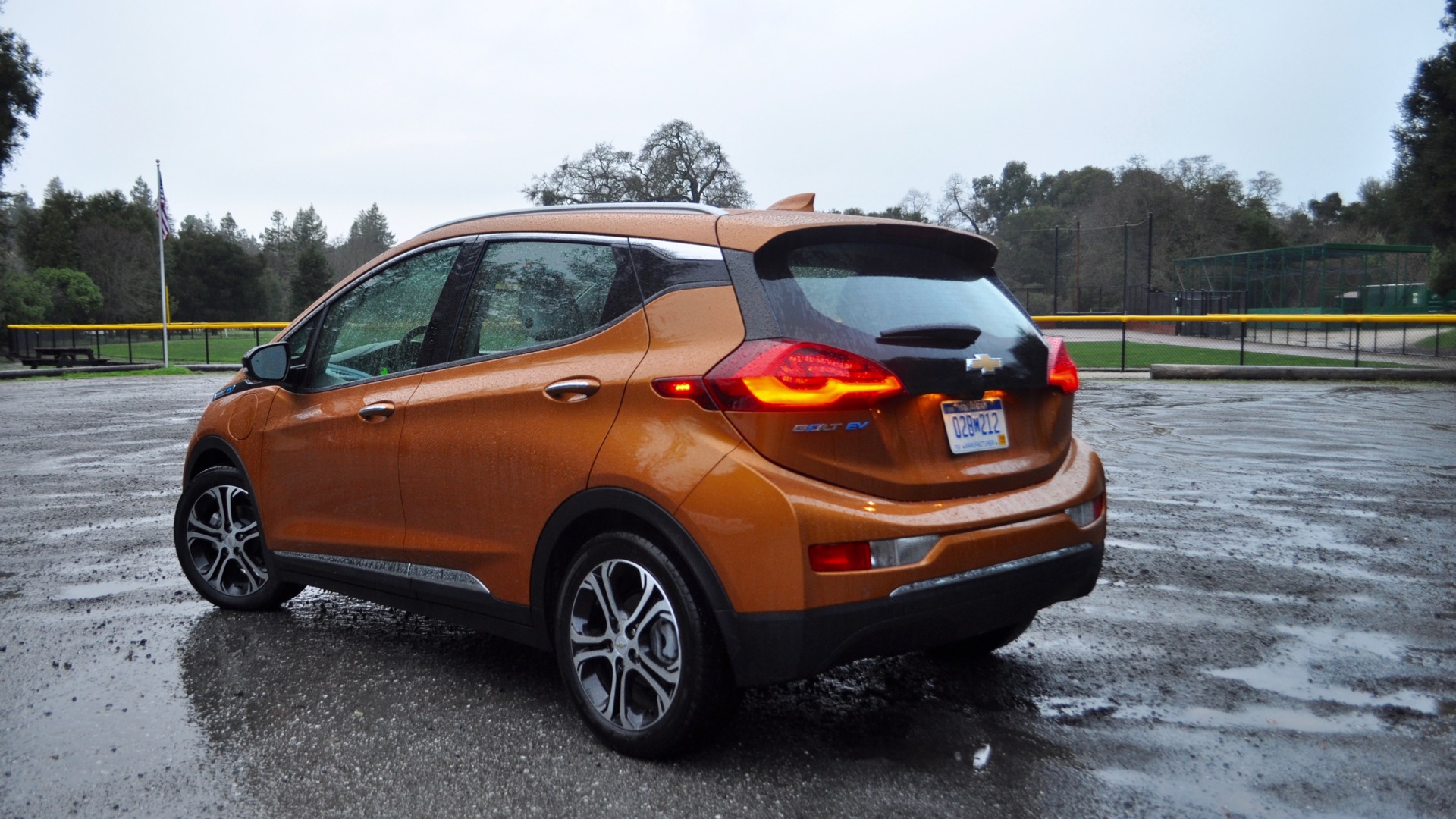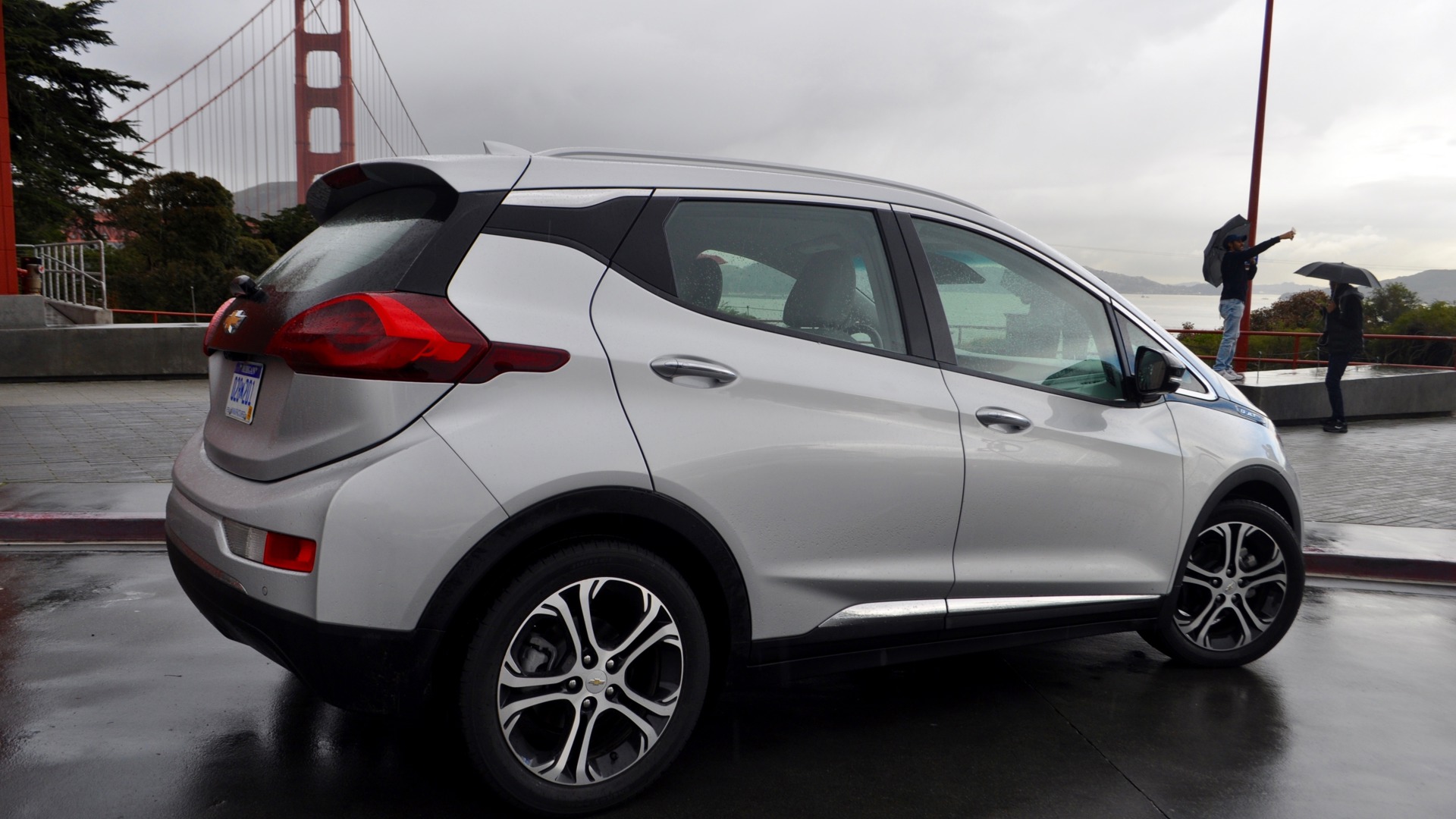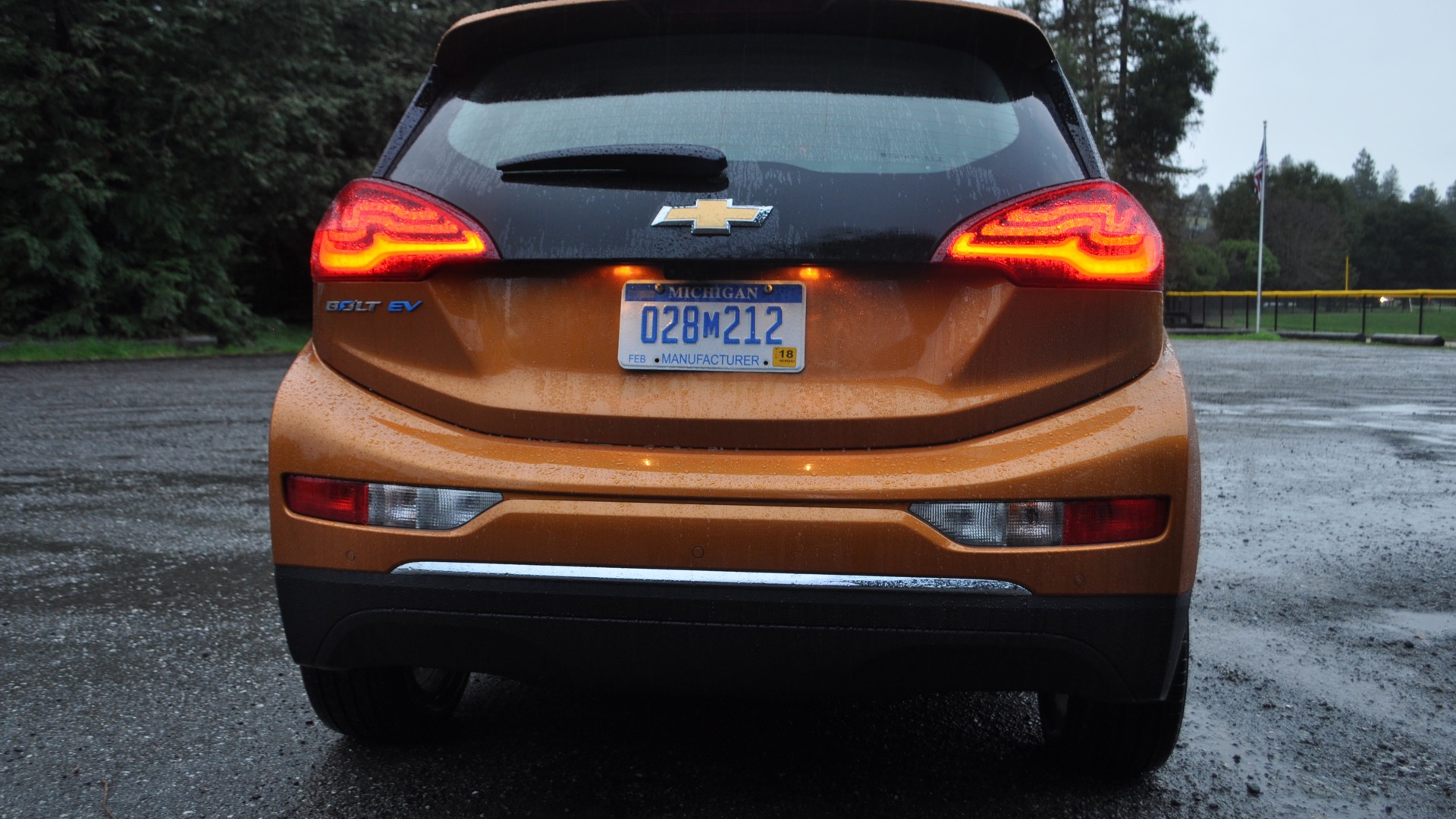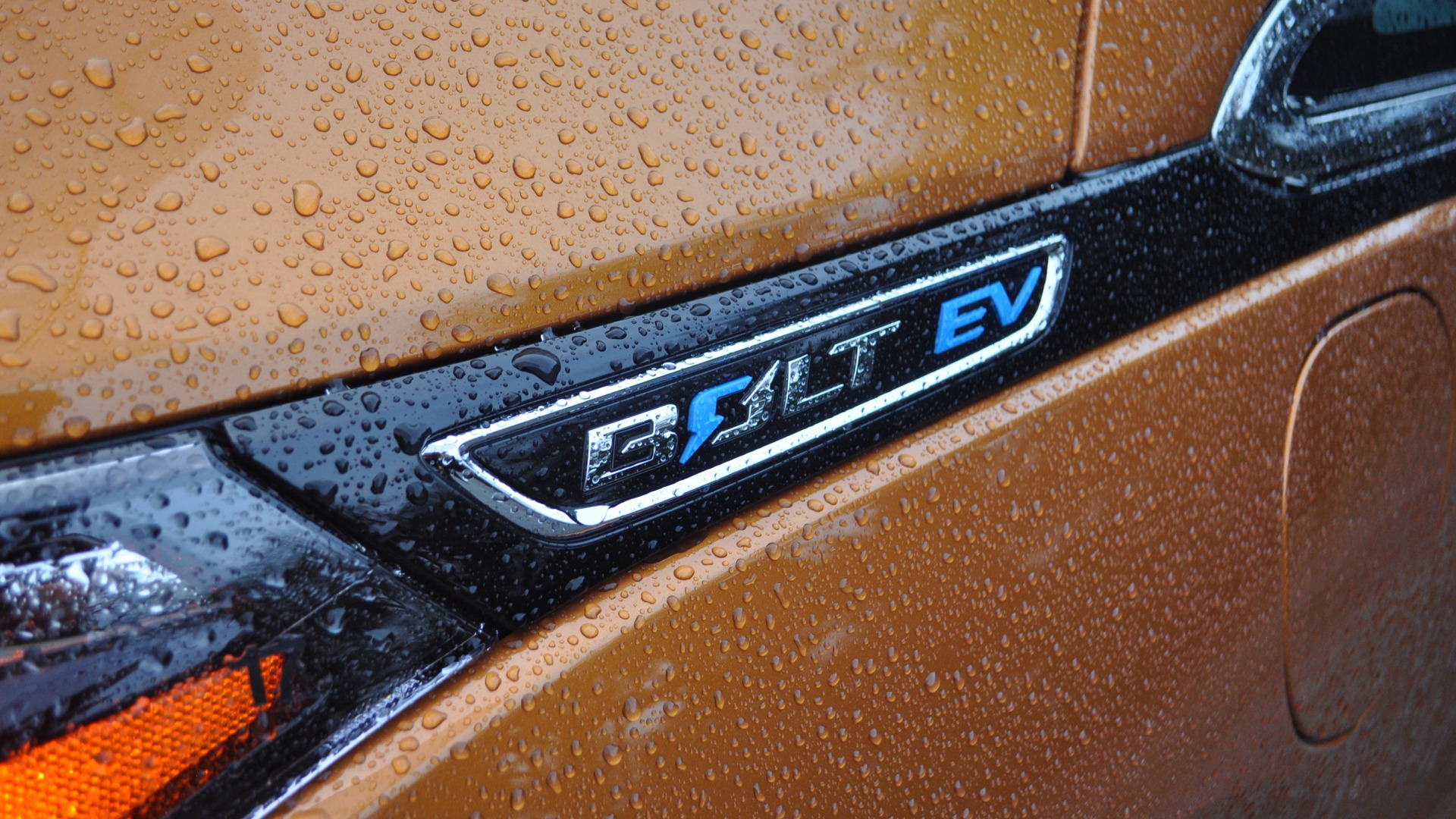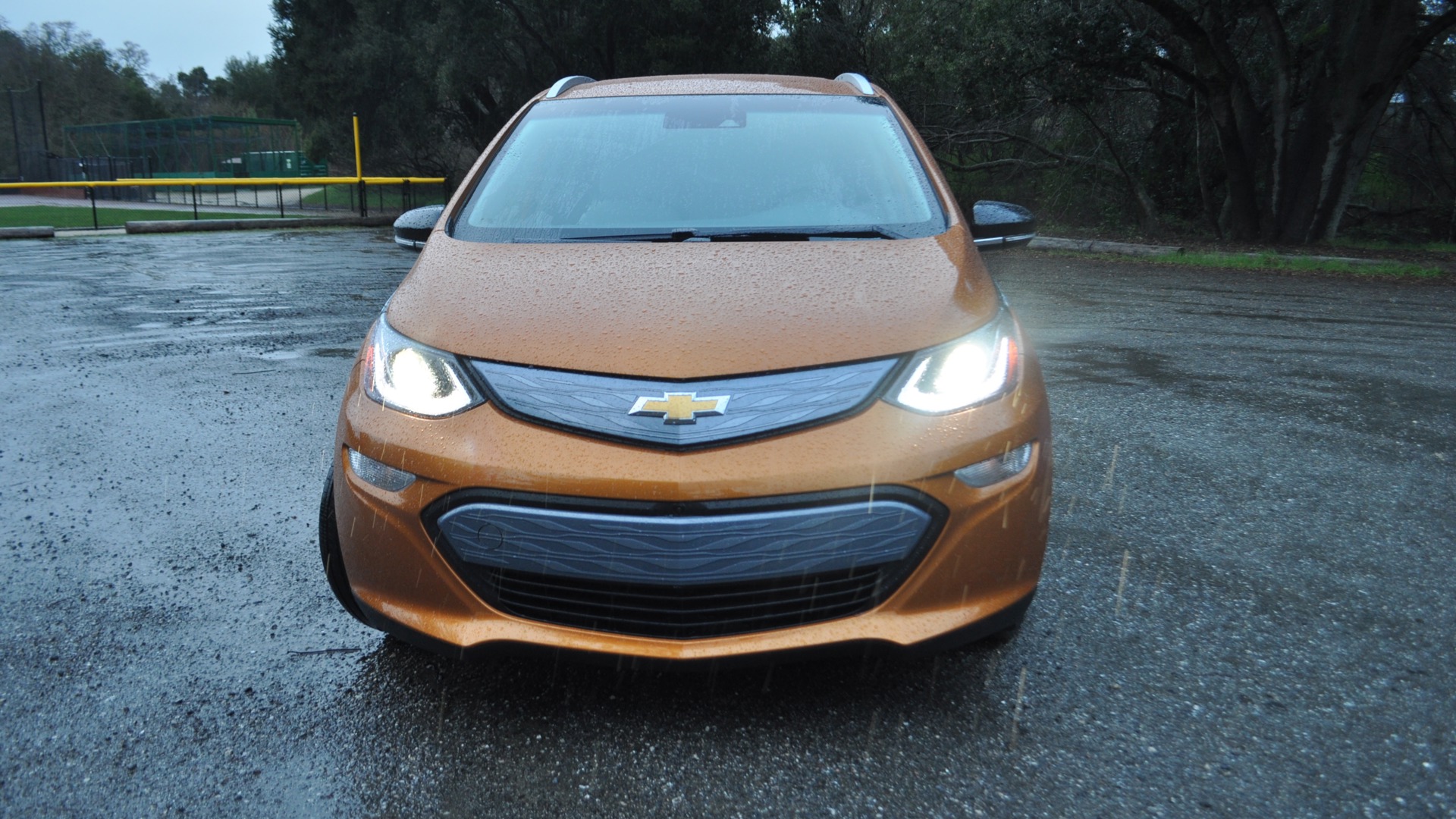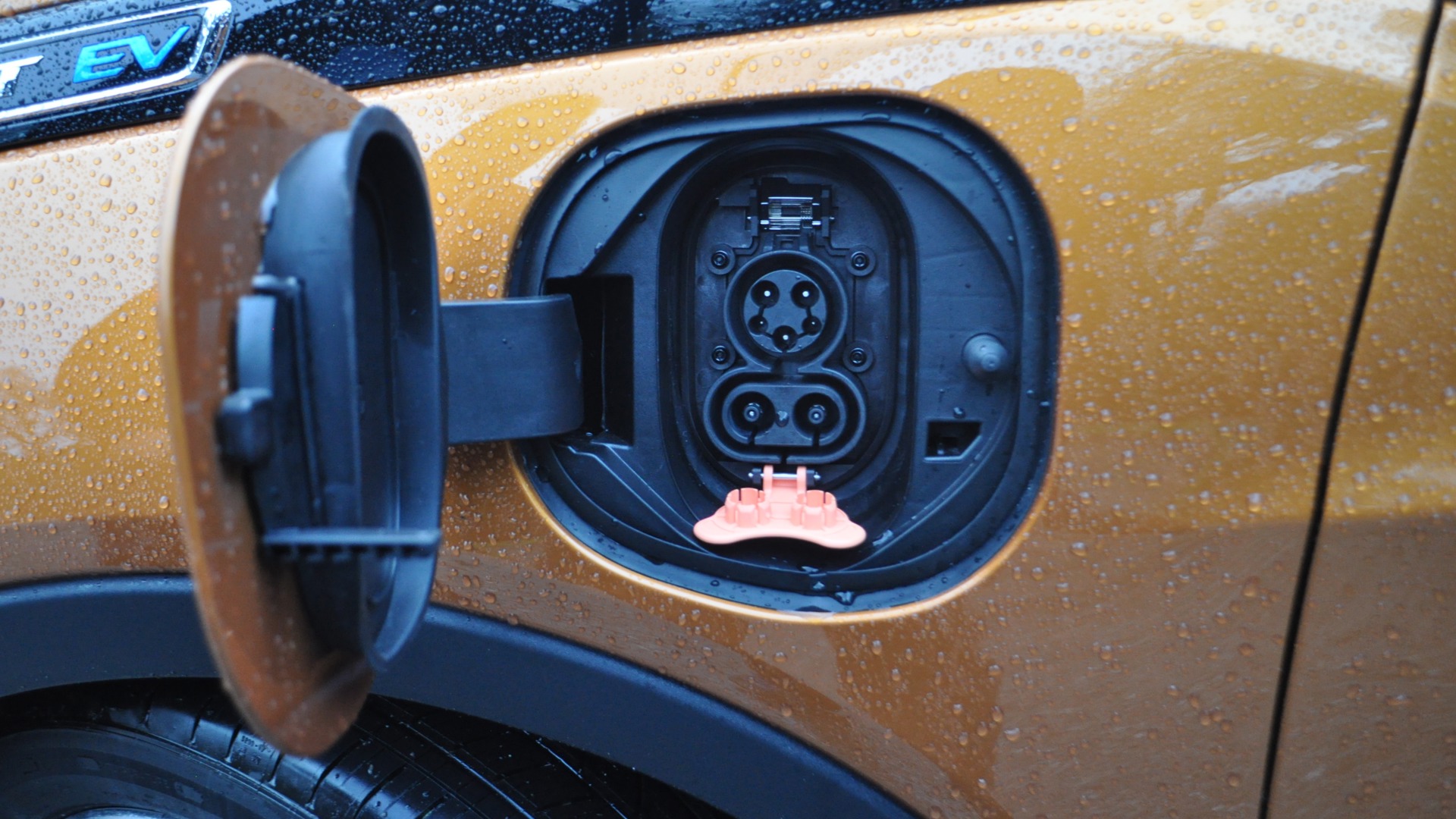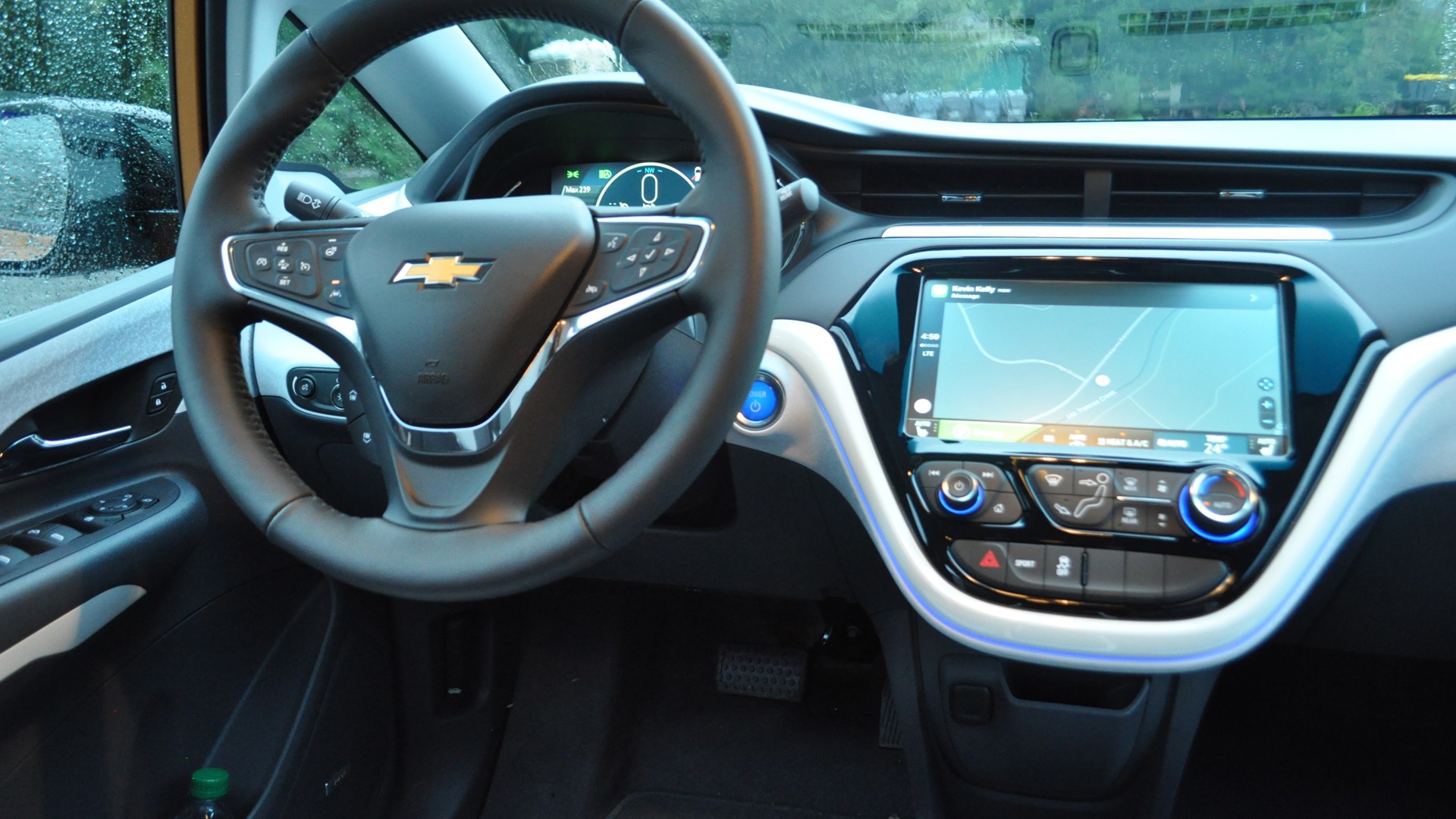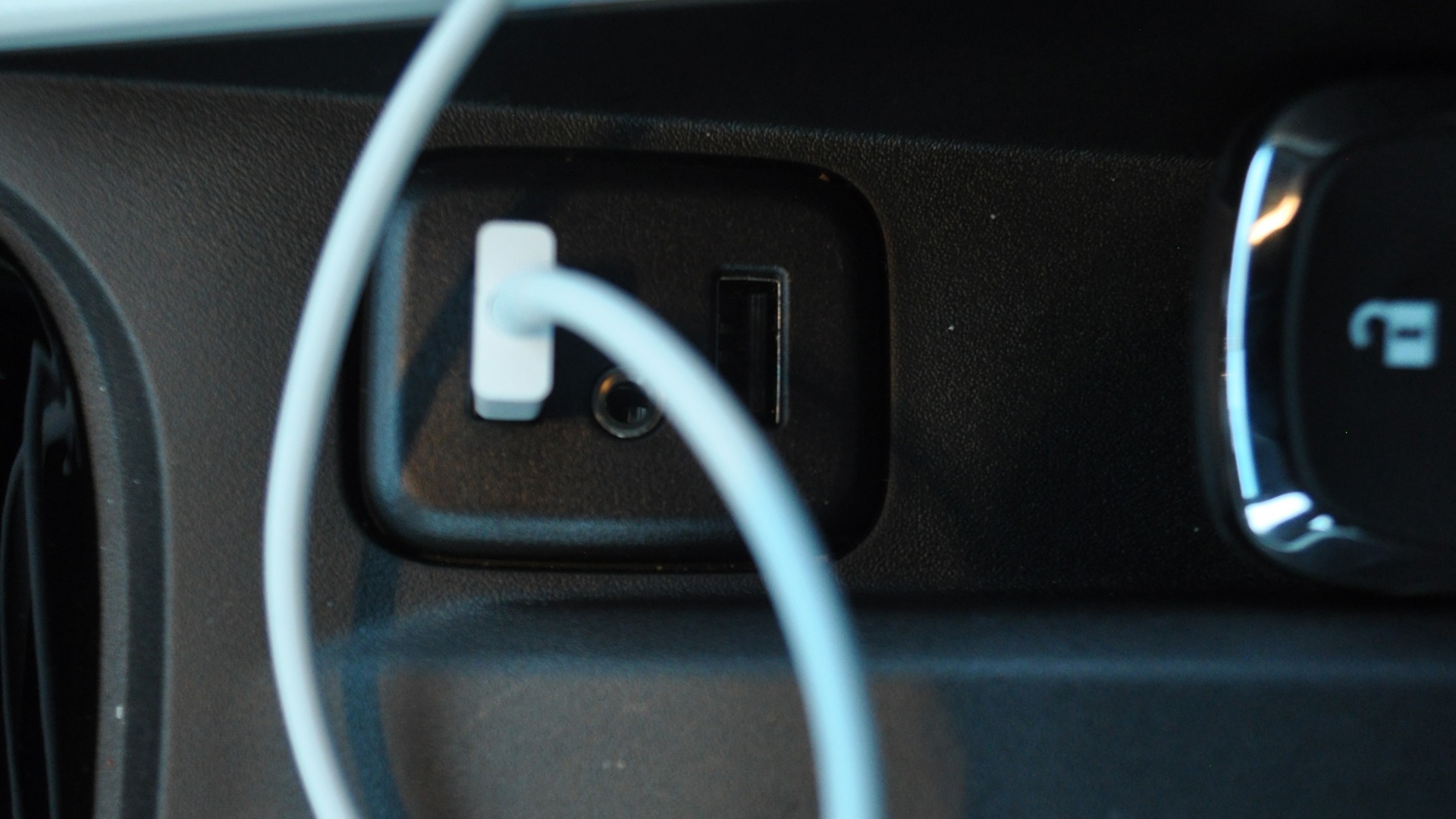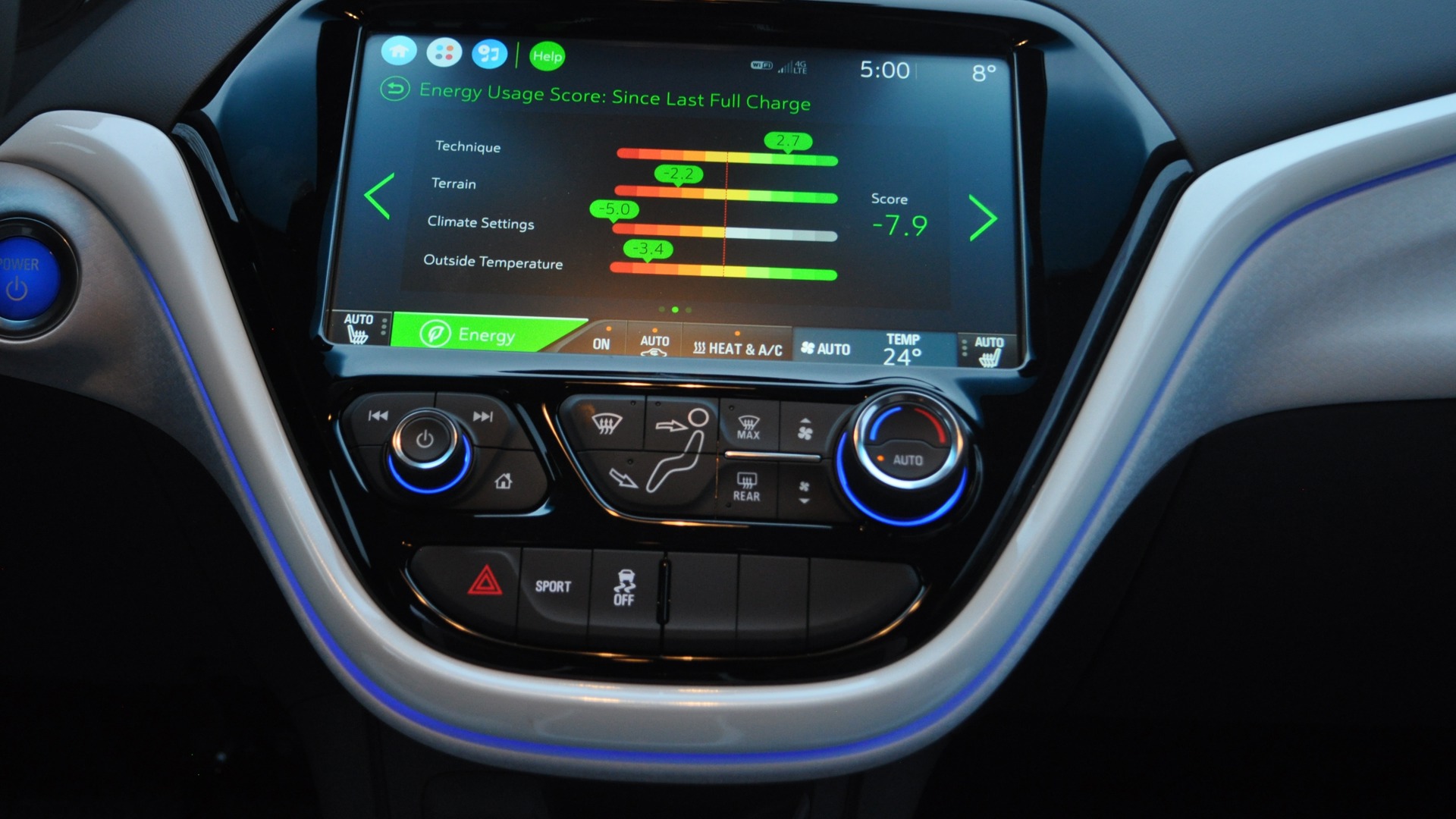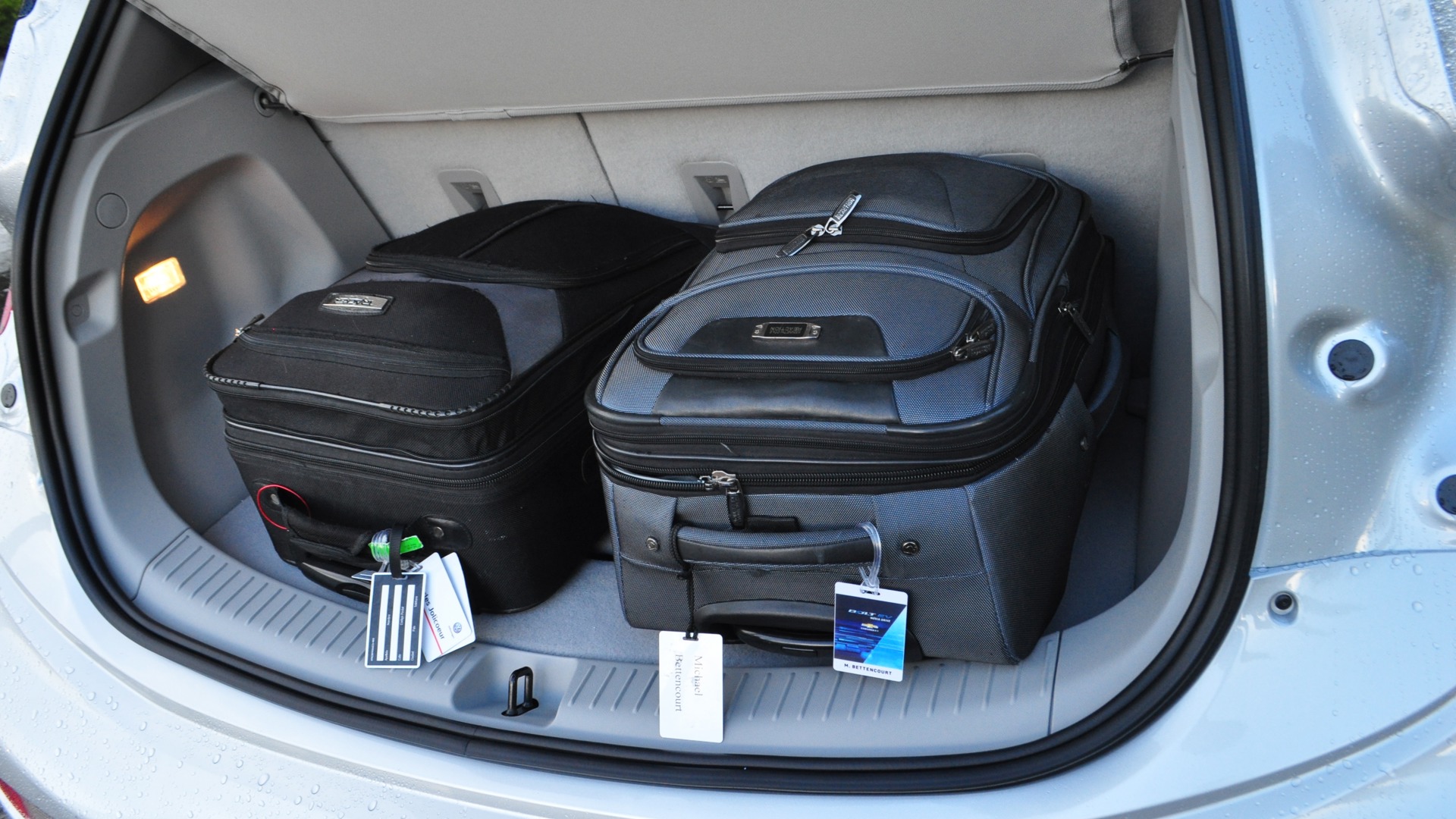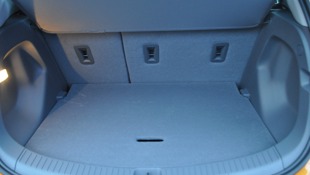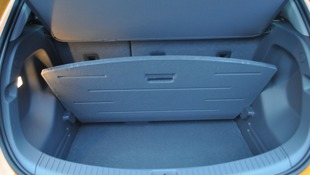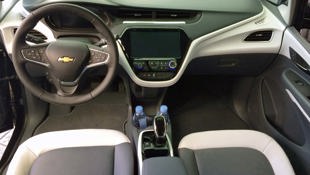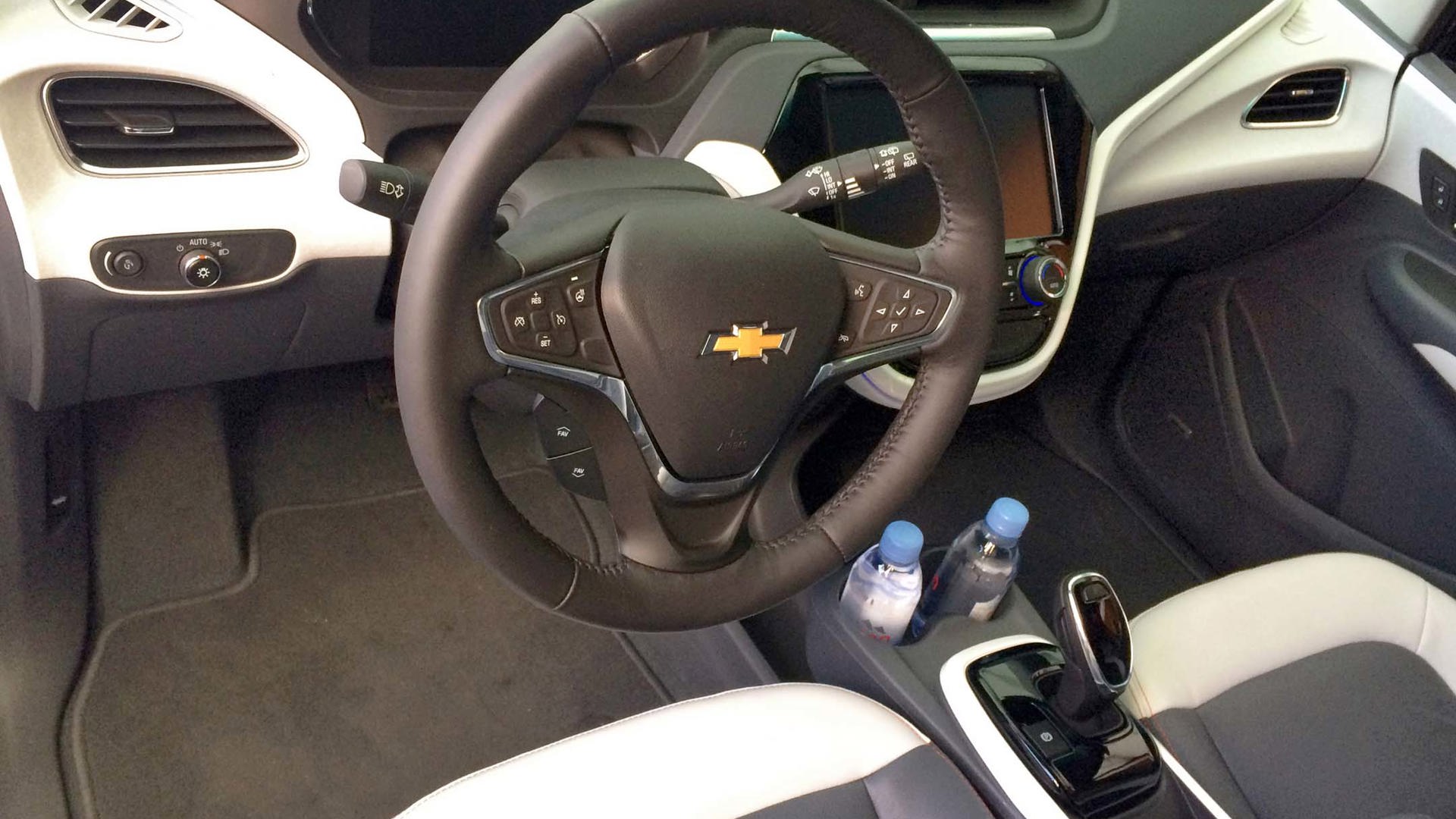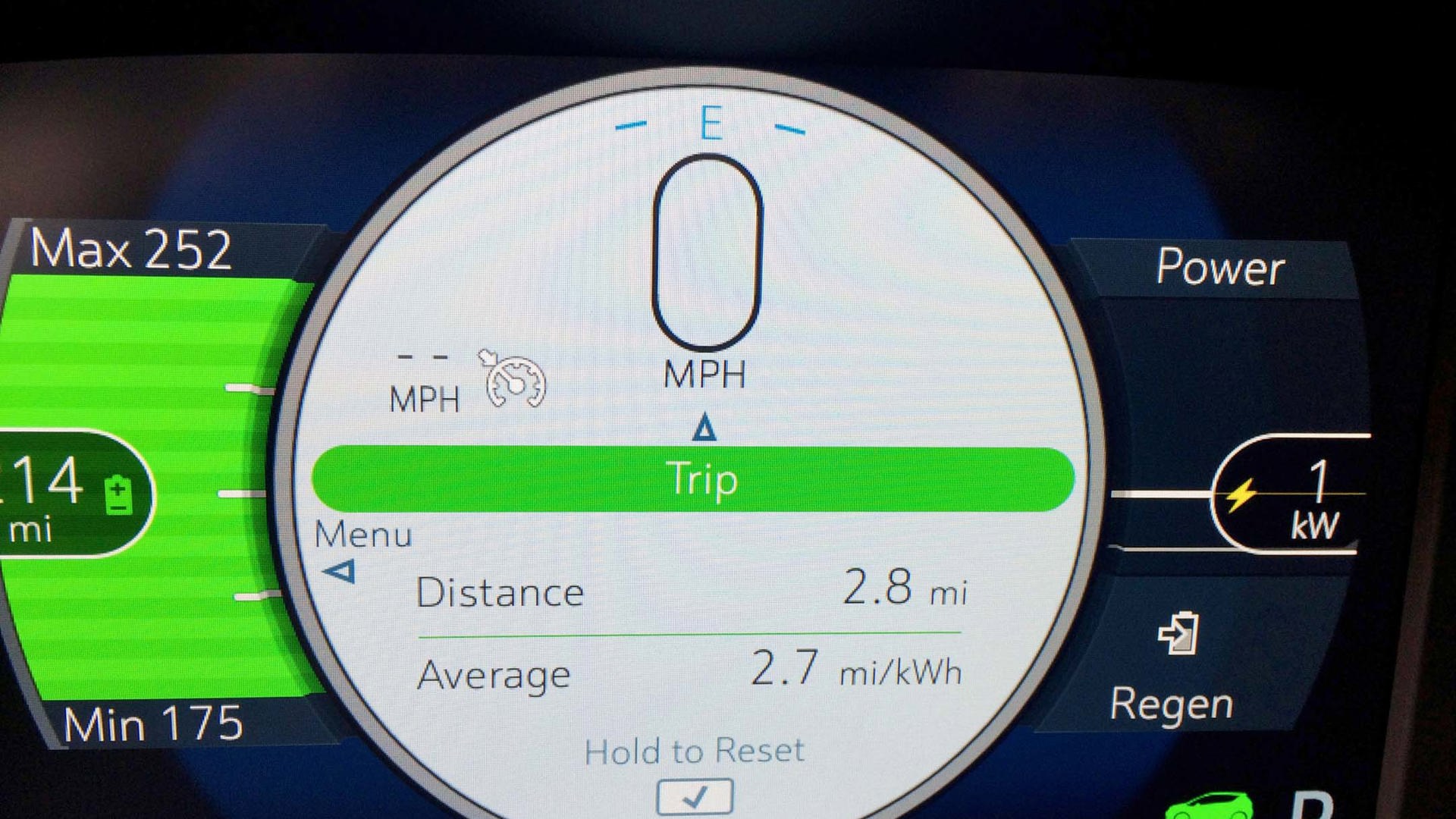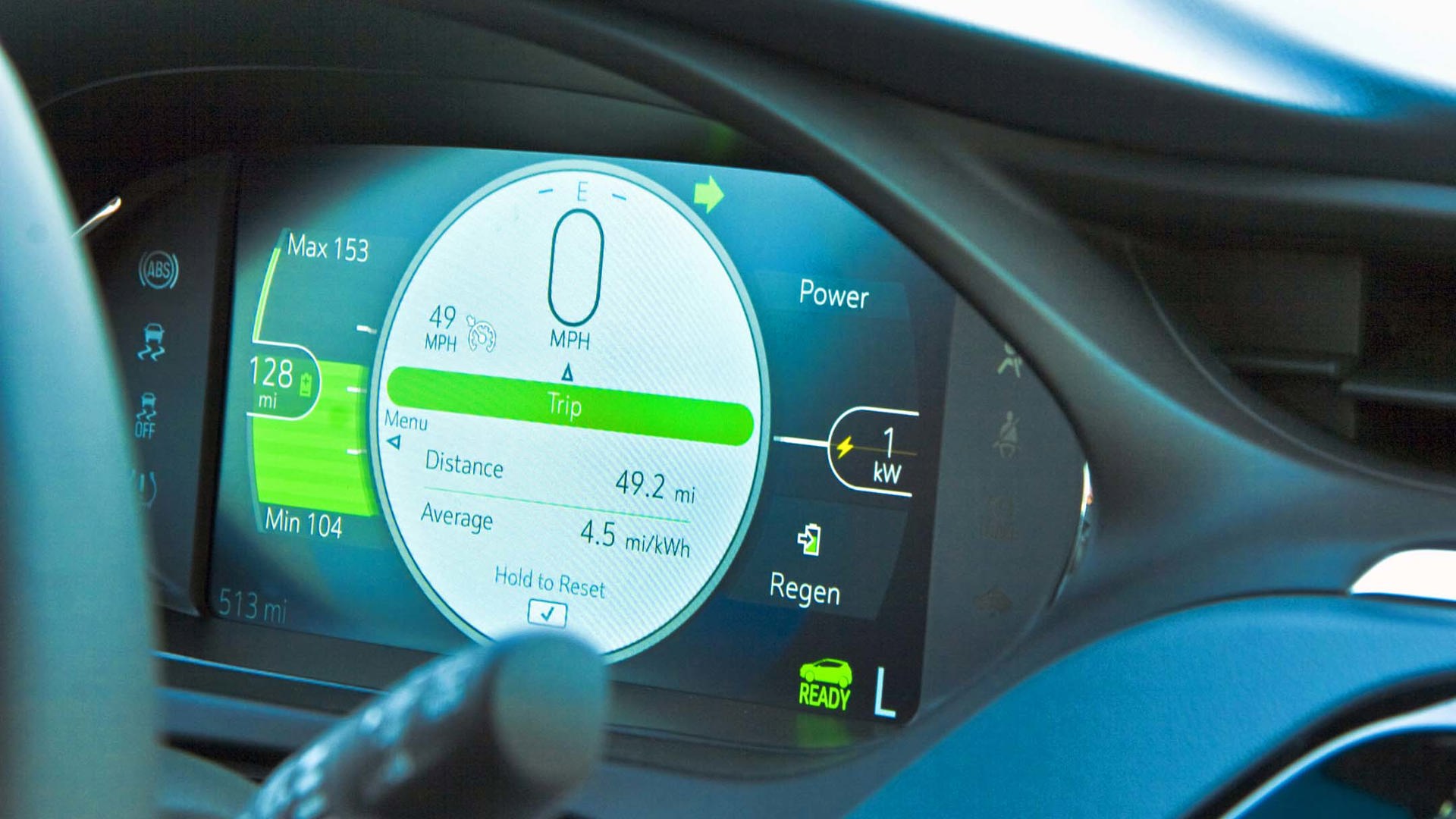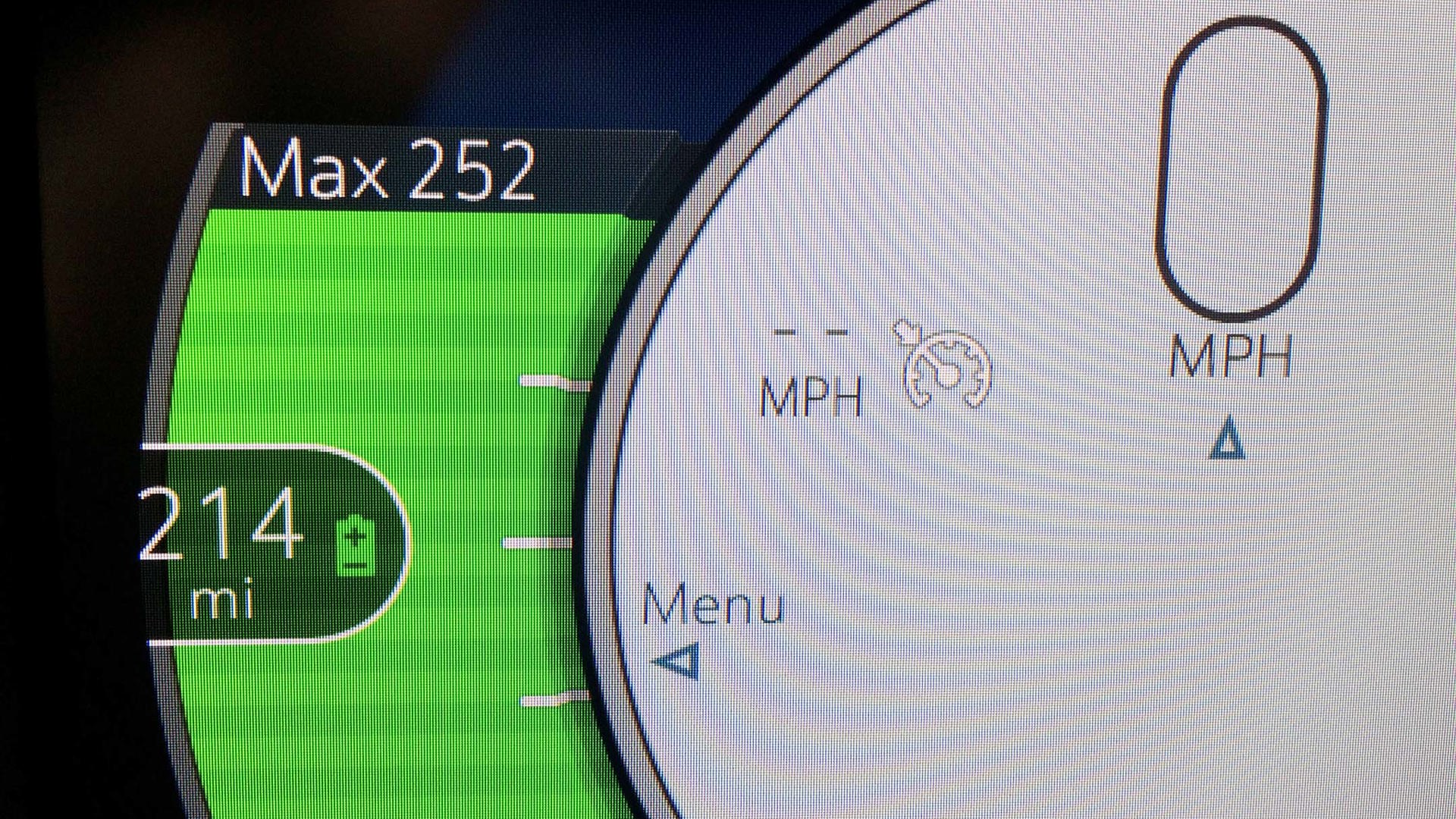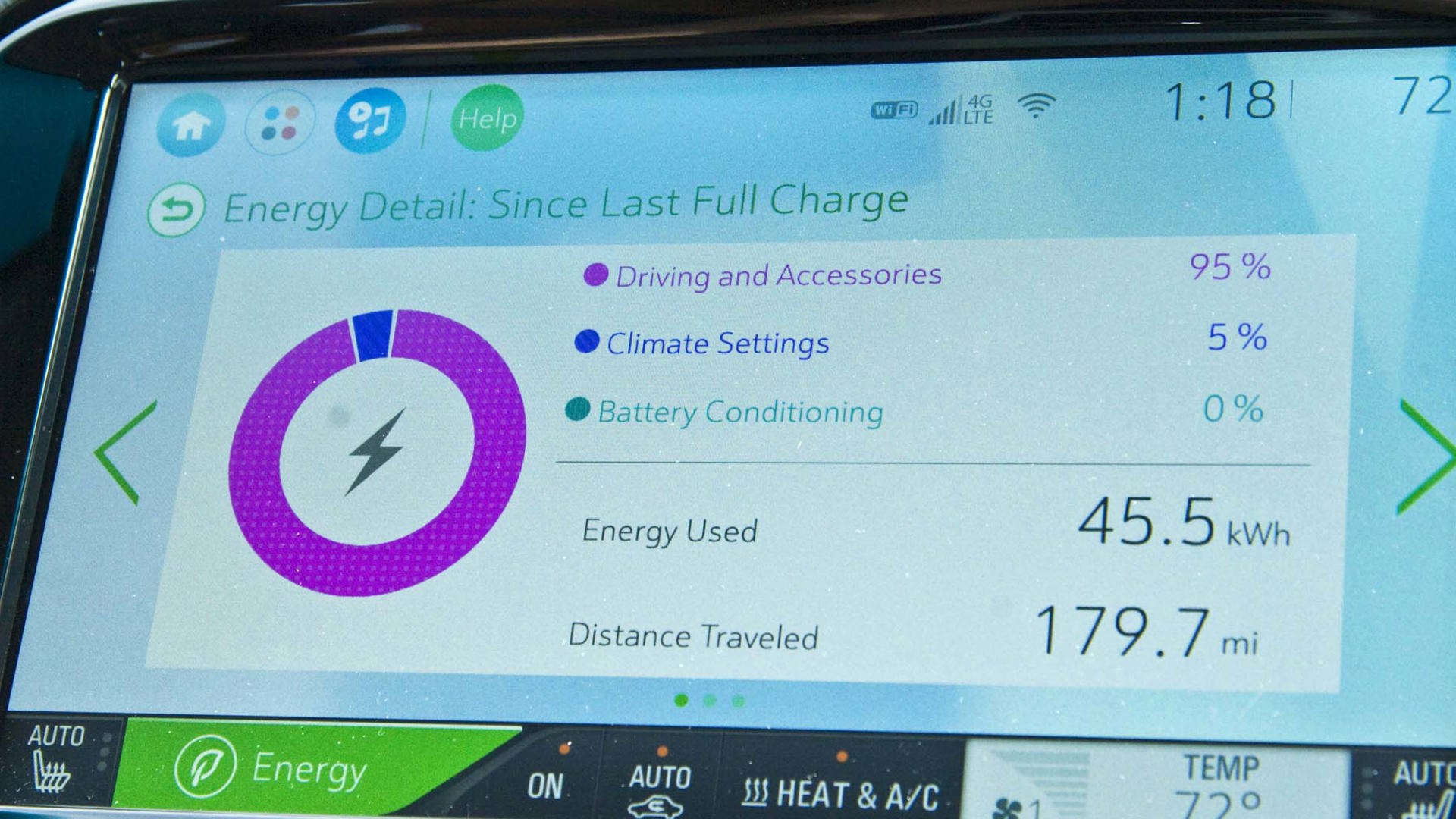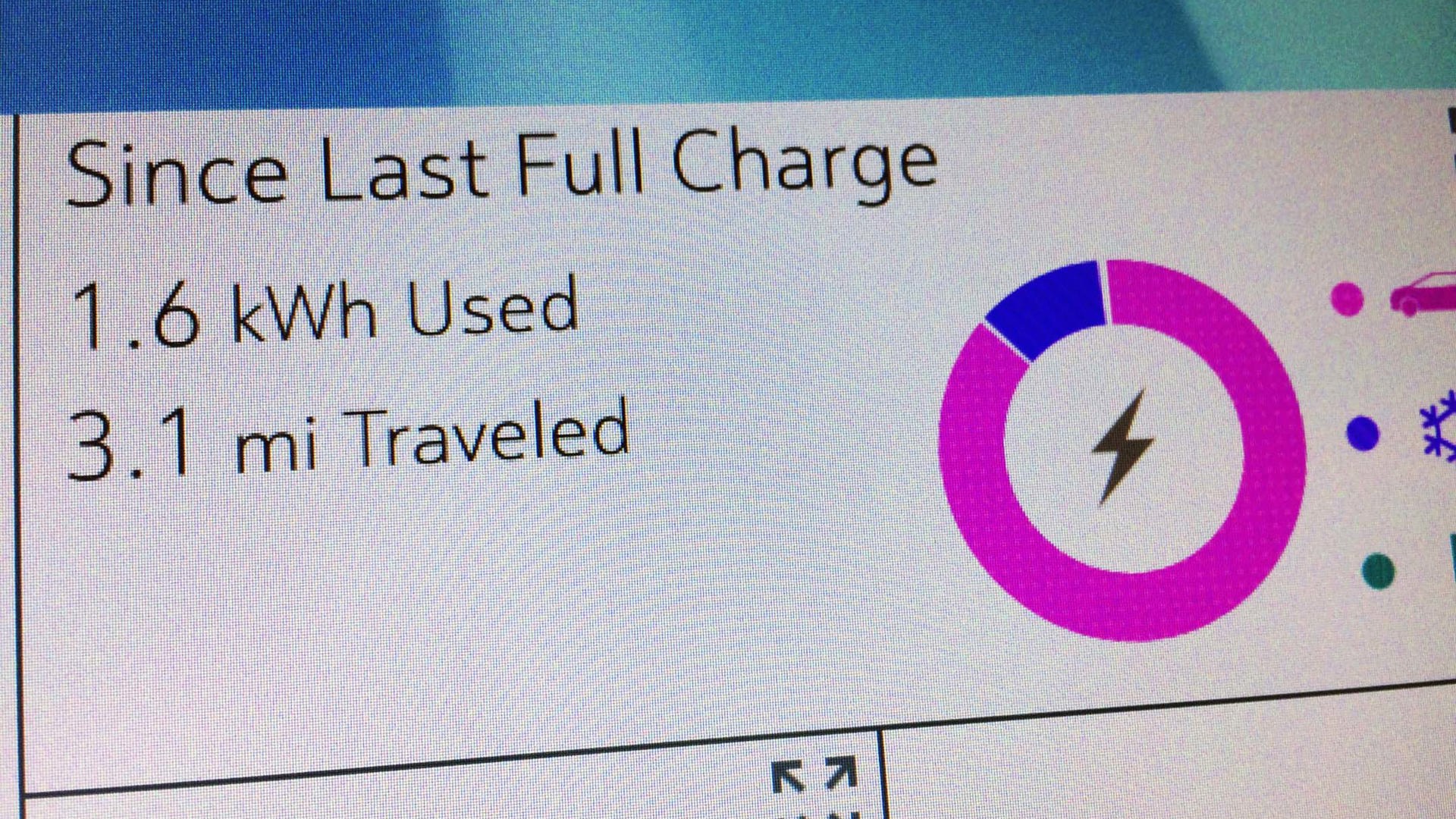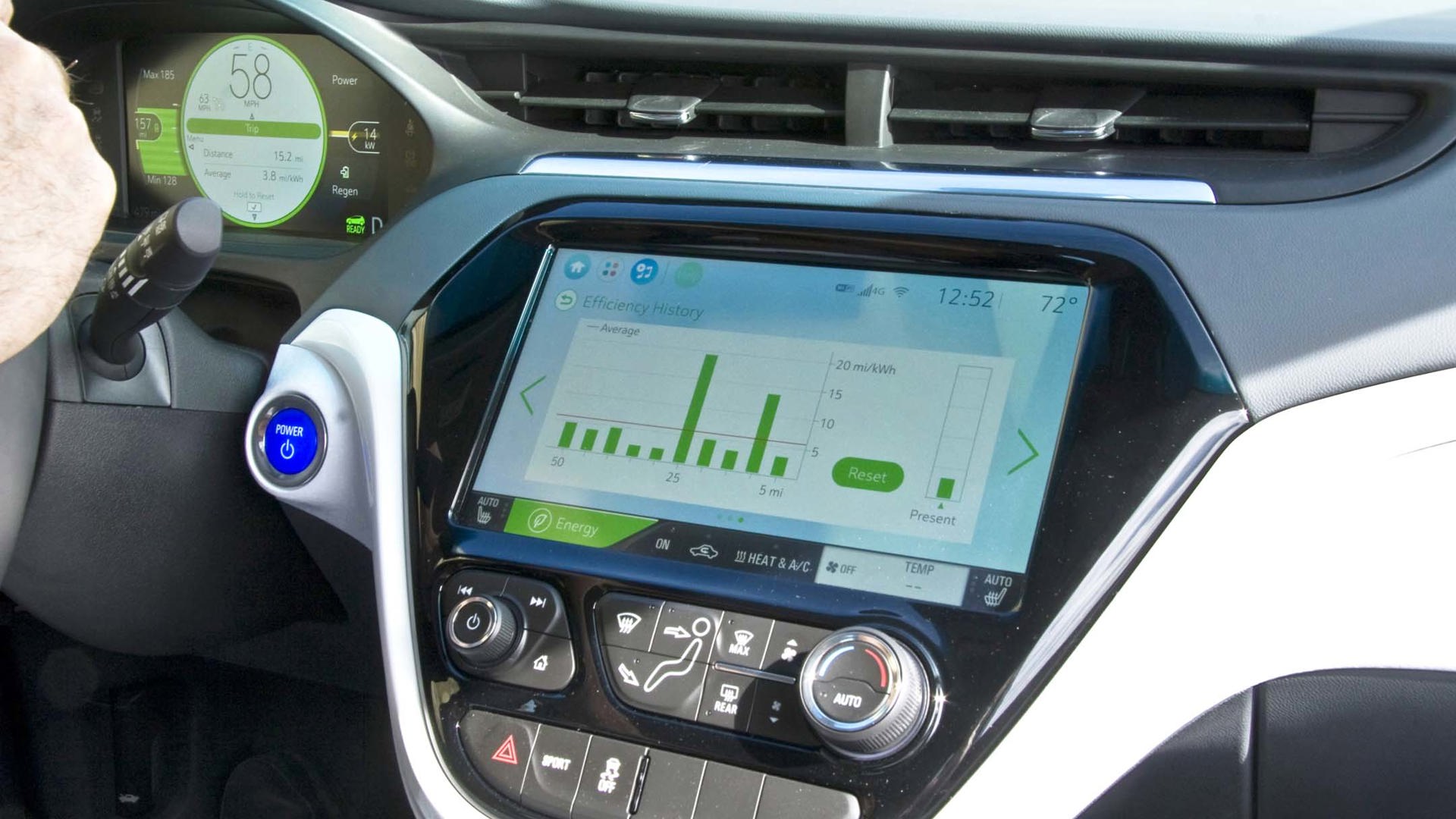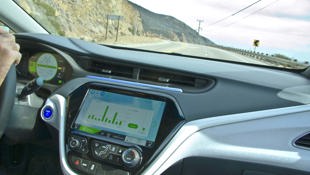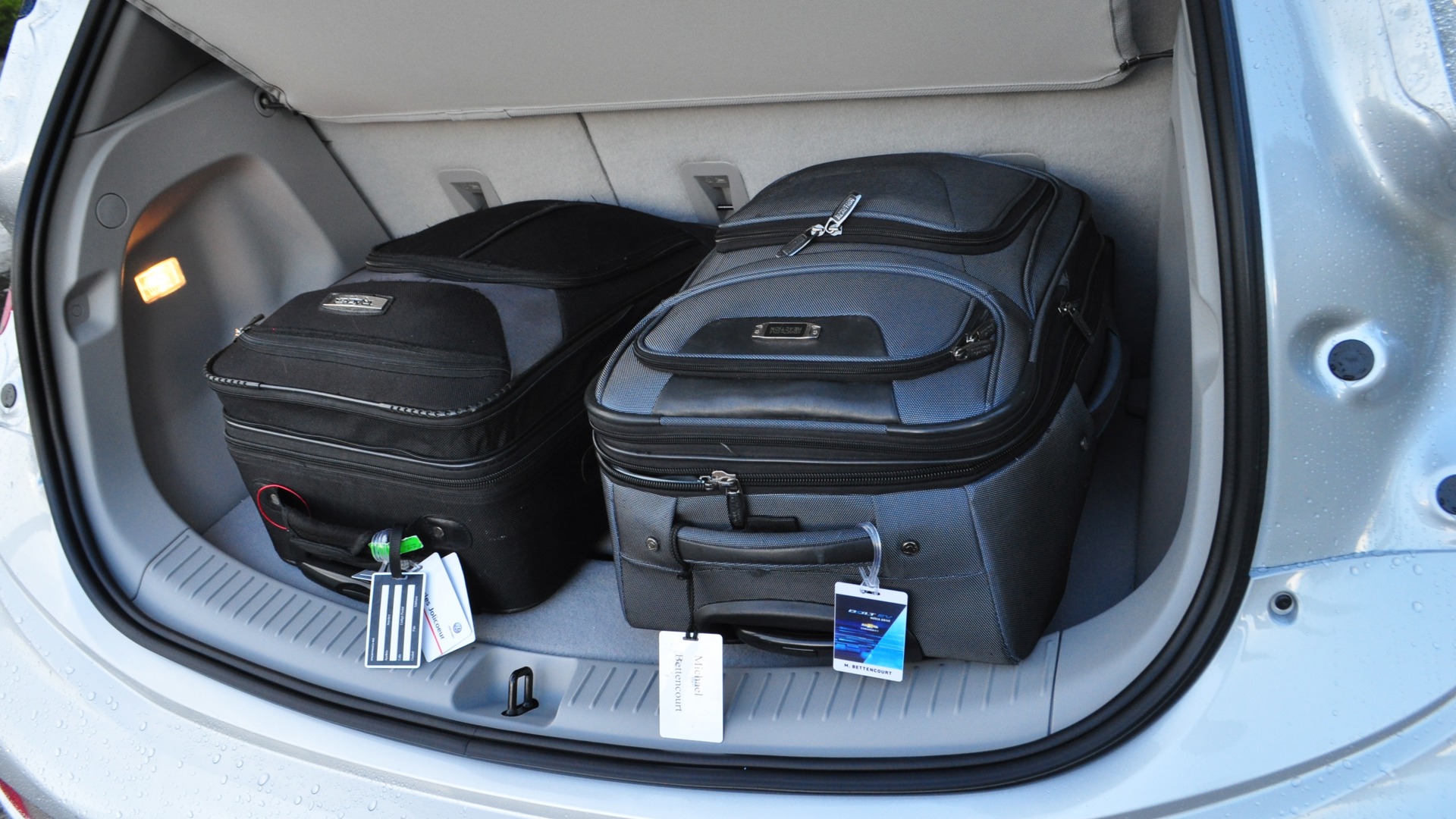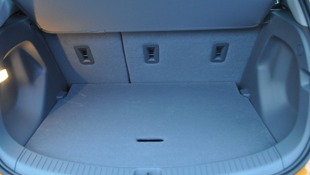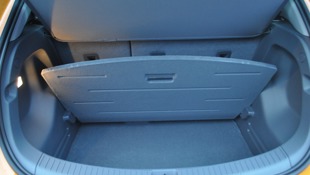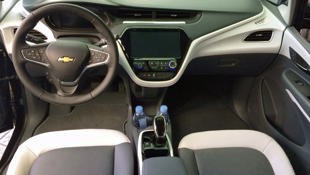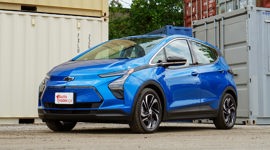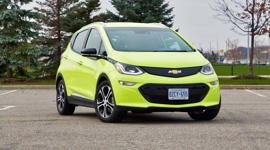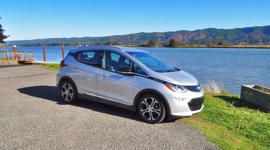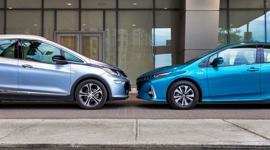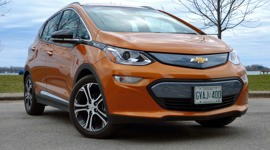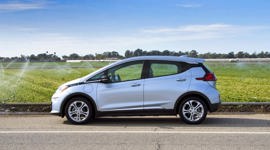Palo Alto, CA – The Chevrolet Bolt is no doubt an industry-disrupting technical marvel. Before its first deliveries arrived at Canadian dealers in late January, the only battery electric vehicles (BEVs) that could travel more than a gas-like 350 kilometres on a single charge in this country were six-figure Teslas – while the Bolt starts at $42,795.
And that’s before a freshly expanded $14,000 rebate in Ontario on all Bolts, not just the pricier Premier trim, with smaller but still multi-thousand dollar provincial rebates from BC ($5,000) and Quebec ($8,000).
That MSRP on its own makes the Bolt a white-glove slap in the face to the California company, one that says GM is now serious about taking on Tesla at its own totally gas-free game. Tesla’s long, iPhone-like lineups outside its stores helped collect over 400,000 buyers willing to place $1,000 deposits for Tesla’s upcoming Model 3, despite the vast majority not seeing or sitting in the car in person before plunking down the (refundable) cash.
This flashpoint of buyer interest made it impossible for any rational auto executive (or auto critic) to sensibly argue there’s no consumer desire for electric cars. Even our own unique household experience with EVs suggests otherwise: we’re on our second EV now, and already contemplating our third.
And the Chevrolet Bolt is one of the reasons why. But so is that Tesla Model 3.
Electric family dilemma
See, our family has owned a plug-in car since late 2011. As an early EV fan, I helped convince my wife to plunge into the then-unheard-of world of gas-free driving, and we bought an early, fully electric Nissan Leaf. Not a long-term test, not an old press vehicle tester bought for a song, but brand-new, for full price, from a dealer not willing to negotiate one dollar off the MSRP. Literally. Not even floor mats.
We’ve since traded the Leaf in on a slightly newer 2013 Ford C-Max Energi plug-in hybrid, my wife’s current (bazinga) tall-ish hatchback/crossover commuter. It provides that addictively smooth and silent power while on battery, and a welcome sense of go-anywhere confidence, thanks to its gas engine. That’s a welcome respite from life with that early Leaf, which never left us stranded, but garnered a few stressful close calls and a few very inconvenient but necessary charge stops.
But with the Ford, its super quiet EV range is continually contrasted with the loud racket of its four-cylinder engine as it rudely awakens, and often when there’s still battery charge left, which is somewhat annoying. Plus the battery that takes up half of the cargo area was obviously stuffed in there as a quick-and-dirty effort. Which is also annoying.
The Bolt is designed to address all of these key plug-in shortcomings. There’s lots of convenient, go-anywhere range, with an impressive EPA-estimated 383 km worth bladder-busting distance; a flat, unobstructed floor; plus all quiet, all the time, no matter how hard you punch that accelerator, or heat the cabin.
Its styling is also meant to appeal to a wide swath of consumers, with none of the futuristic fervour of a Toyota Prius or BMW i3. Indeed, GM was wise to shape it like a crossover, despite the lack of all-wheel drive, as its 1,595 mm height is much taller than the Nissan Leaf or i3, its two main market rivals, at least until the Model 3 arrives.
Lots of people space, not so much cargo space
But what I really wanted to test, when I arrived in California recently to test drive the Bolt and talk with the people behind it, was whether it seemed as small in person as I had found while sitting in or gazing at them at various auto shows. The tall-ish height not only made getting in and out easier, but helped provide lots of headroom inside, for both front and rear passengers, as I discovered in a healthy stint in back.
But when we tried to squeeze two people’s worth of overnight bags plus camera gear in that cargo area, my driving partner and I quickly realized it wasn’t going to work, and we enlisted the rear bench. GM says the Bolt’s rear cargo area is larger than the BMW i3 and the Nissan Juke, but those aren’t the roomiest comparables. The amount of room directly behind the rear seats is limited by the Bolt’s relatively short body length of 4,166mm, which we noticed when both of our suitcases perilously bled over the Bolt’s cargo area lip.
From the back seat, I could also see how close the driver and passenger up front were to rubbing elbows, even while I marvelled at how much legroom there was in the rear. Bolt chief engineer Mike Lelli insisted that the car was built on an all-new platform with no relation to GM’s compact or subcompact cars, and the impressive packaging job does tend to support that.
But I couldn’t stop asking myself why GM wouldn’t choose to build something larger when they already have a compact four-door hatchback sitting next to it in Chevy dealers. The subcompact and compact markets are shrinking in North America, where larger crossovers and SUVs are taking over the market.
Driving feel impressive; interior, not so much
There’s not much wrong with how the Bolt feels on the road, and in fact it can be quite entertaining, as Lesley Wimbush found in her Bolt first drive, with its 6.5 second 0–96 km/h feeling even more sprightly than that, thanks to the instant torque offered by its 200 hp and 266 lb-ft motor. It has a fun Low mode in which engine braking increases to the point where you can easily zip around all day without braking, as it slows down all the way to walking speed just by taking your foot off the accelerator – and warns other drivers by activating the rear brake lights.
There’s also a paddle on the left side of the steering wheel that can give you additional regeneration, in a system first seen on the Cadillac ELR and now the Chevy Volt as well. I found this to be useful when you wanted to come to a stop without touching the brakes at all, or simply wanted more regen when the battery was coming close to depletion.
While we’re touching on the interior, it has to be said that the cockpit of the Bolt does not appear to be that of a vehicle that starts at $44,495 after freight and taxes, or $49,495 for the range-topping Premier. Sure, it has a nice high-tech edge to its centre console, with its large 10.2-inch screen up high, a rearview mirror that can use a camera to show you a wider view out back ghosted onto its surface, and Apple CarPlay/Android Auto capabilities.
But if you don’t happen to have a cable to connect to your phone, you also don’t have a navi system on that big screen, as there’s no native GPS technology, nor a CD player. Granted, these cars tend to be favoured by folks comfortable with new technology, but that’s a lot of potential data used up by your phone.
The shifter is also a new electronic unit that always returns to the same spot. As with many such shifters, finding R and D quickly can require some practice, and may seem finicky at first.
What’s worse than finicky is the painful possibility of that shifter catching the edge of your pinky finger when shifting, which happened to me once as I was parking.
Cost numbers key to mainstream acceptance
GM has found that the three provinces that offer rebates make up 98 to 99 percent of their plug-in car sales, whether BEV or plug-in hybrid, so the plan is to make the Bolt available first in those three provinces, concentrated with dealers in big cities at first. Roughly half of GM Canada’s dealers have signed on so far to sell the Bolt, with expectations that the car will be available in other provinces in 2018.
The company proudly states that its ground-breaking BEV starts in Ontario at $30,406, outside of freight, fees and taxes, after the $14k rebate. But there’s something important to keep in mind: that $14,000 rebate from the government comes after sales taxes and the above fees have been charged. So the full $42,795 starting price (or $50,279 after all taxes and fees) would become $36,279. And for the top-line Bolt Premier, the same formula leads to a $55,929 price tag after taxes and fees, so after the rebate comes through, total cash outlay is $41,929.
That’s not a lot of money for an electric car with a 60 kWh battery and such long range. But for many consumers, that would be a lot of money for a compact Chevy with lots of gadgets but still a bargain basement interior when it comes to trim materials.
Fortunately, there are more positives than negatives here. GM took the remarkable step of requiring every one of its dealers who sell the Bolt to install a Level 3 fast charger. They're not mandating it to be public facing - having one available for all EVs after hours would be ideal to help spread the EV love - but it is a significant yet worthwhile investment for dealers to implement. So every dealer that sells the Bolt deserves a forward-thinking pat on the back, as only about half of Chevy's Cdn dealers are expected to make that commitment, with most big city dealers in the three rebate provinces already onboard.
With the Bolt, GM really wants to target those enthusiastic EV buyers that came out in such high numbers for the Tesla Model 3. But as we’ve seen with our own EVs, both of them with compromises that limit their appeal, it's price and winter performance that are especially key. And if mainstream buyers don’t buy electric cars in healthier numbers, then mainstream car companies are not going to invest the big dollars needed to produce them.
This 2017 Bolt is the car that will most seriously test that mainstream acceptance – or lack thereof. But I fear that while they’ve created a great electric vehicle, they haven’t quite managed to create a great mainstream electric car.
Moving the EV game forward, yes. Shoving it forward with two hands and a shoulder? I fear not.
